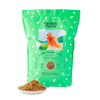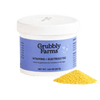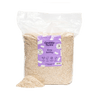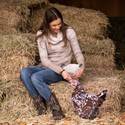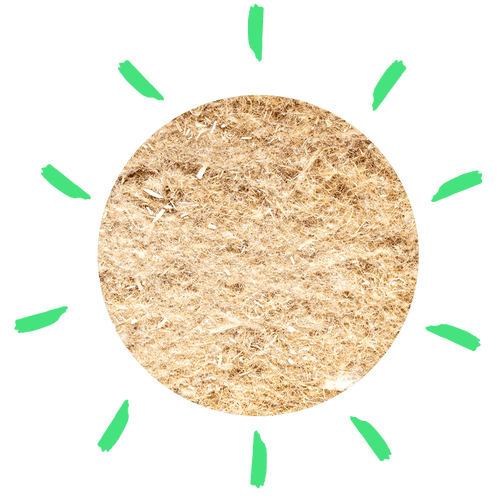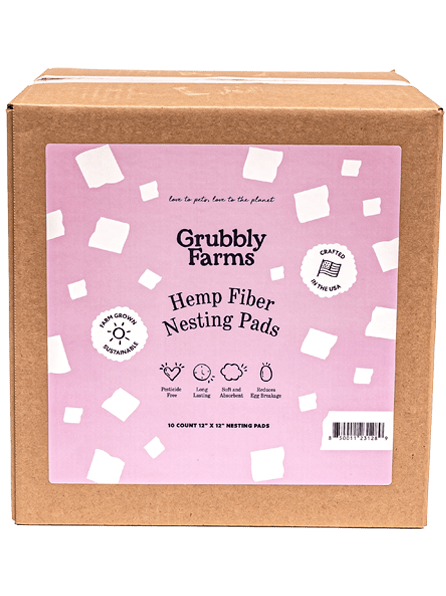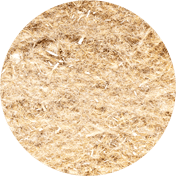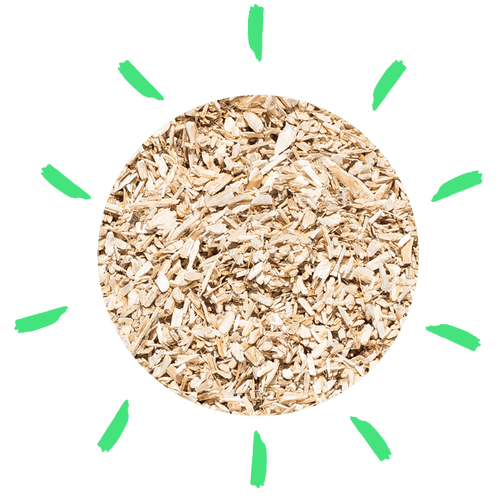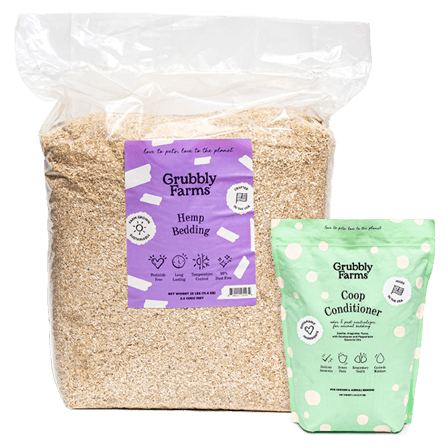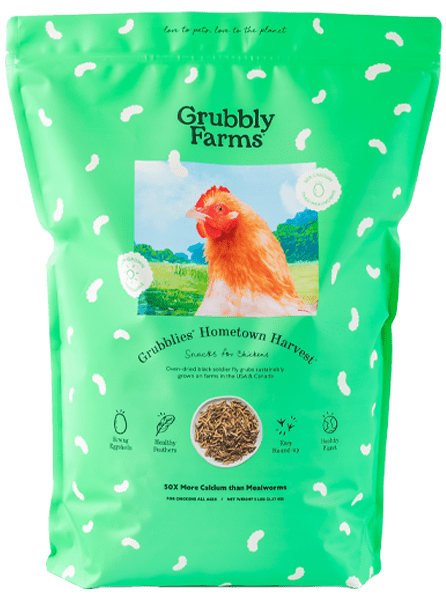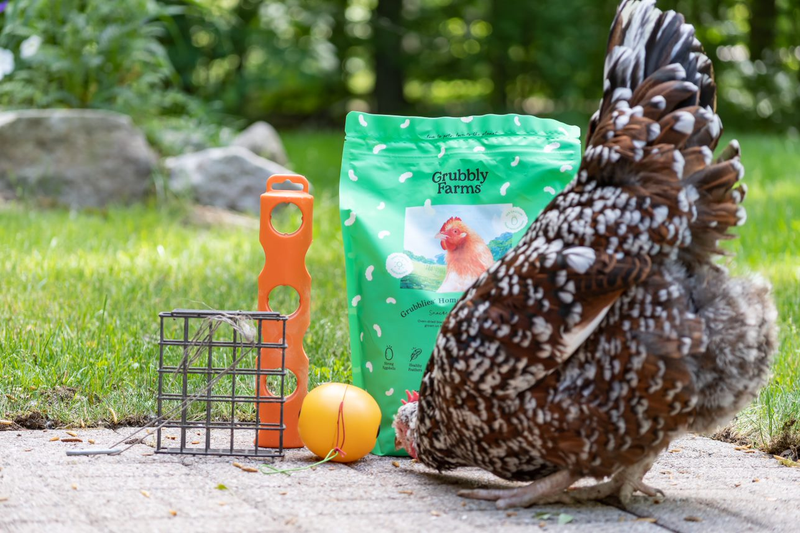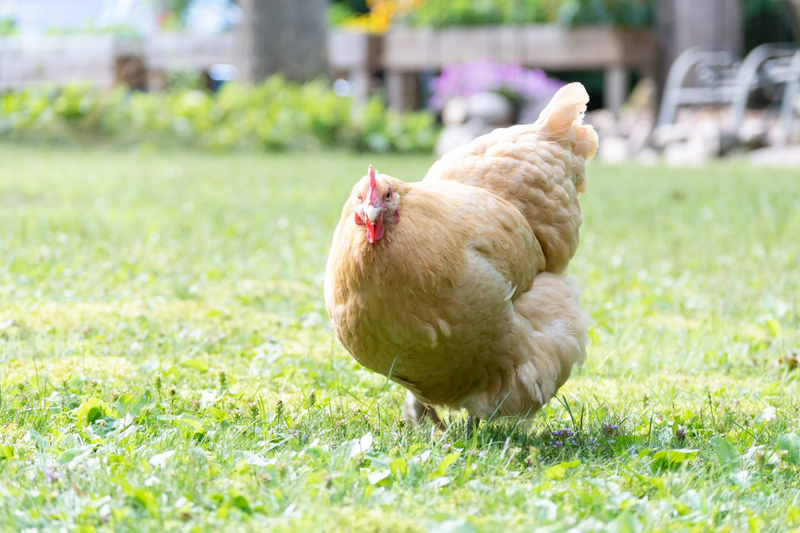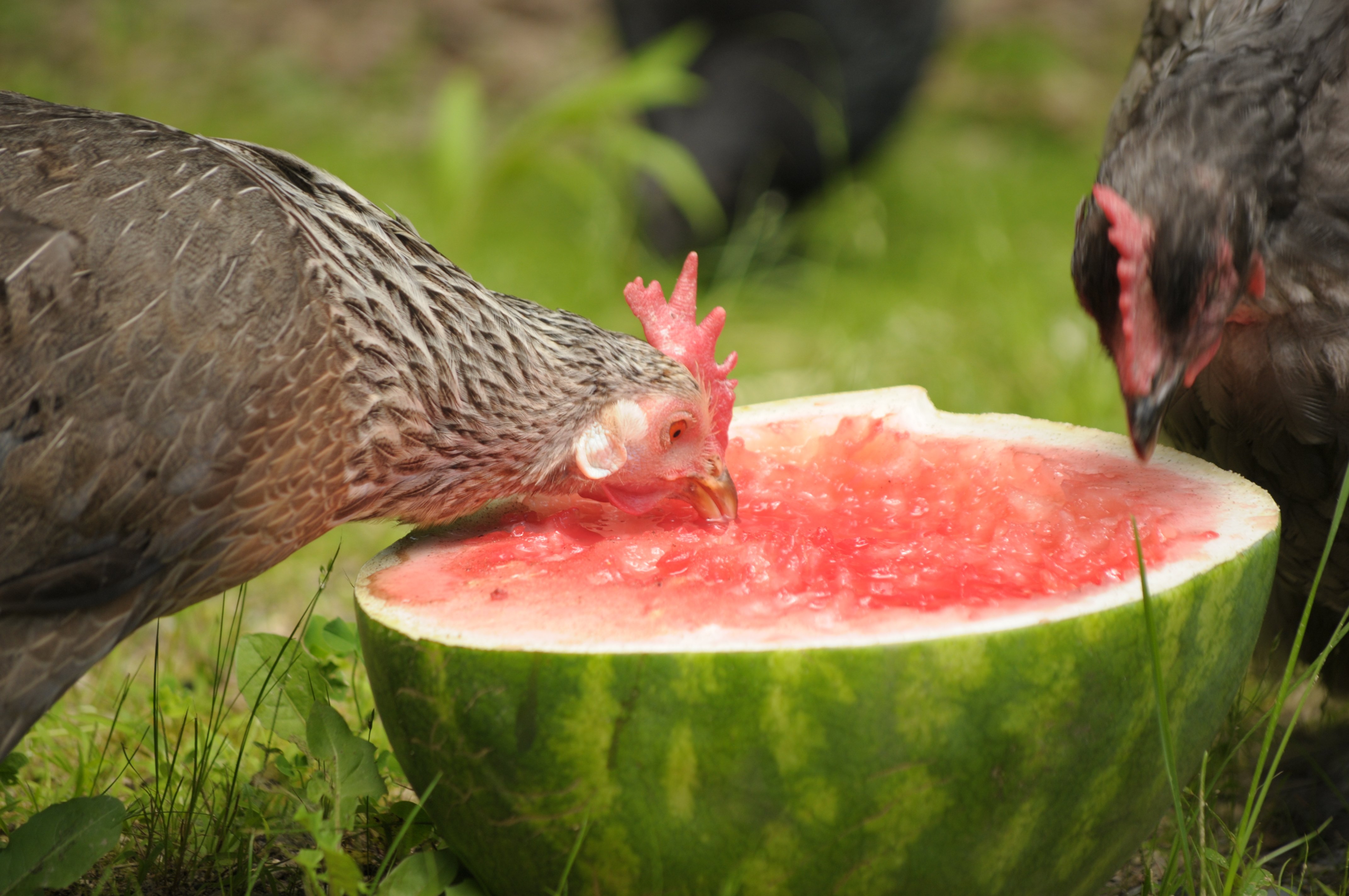Hens will naturally seek to build a nest whenever they need to lay an egg, and they often make a mess when doing it! They will ditch litter out of the nesting boxes and throw litter on their backs as they nest. This can result in nesting boxes with no litter, which can lead to dirty nests and even broken eggs. However, nesting box pads can solve that problem! Hemp nesting pads are a great addition to the chicken coop since they create a comfortable nesting environment for hens and help protect eggs from becoming dirty or broken.
What Are Hemp Nesting Pads?

Hemp nesting pads are like cushions designed to fit in the chicken coop nesting boxes. They can replace or supplement the use of other nesting box litter options like hemp, wood shavings, or straw. Hemp nesting pads are thermoretentive and breathable. They help retain warmth in the nest during the winter, but they are also porous enough to prevent excess heat or moisture from building up in nests during the summer.
One of the main purposes of hemp nesting pads is to protect eggs when they are laid by hens in the nesting boxes. Their soft surface creates a cushioned landing for an egg when it is laid. Additionally, the hemp nesting pads prevent eggs from getting buried in nesting materials when a hen is rearranging her nest.
Hemp is a crop that requires minimal land and water compared to other resources that are grown for chicken coop bedding, like aspen trees for wood-based nesting pads. It is an easily renewable resource, and the entire plant can be used for various purposes, creating minimal waste. Hemp is also a crop that doesn’t generally require pesticides or chemical sprays since it is naturally pest repelling.
Since hemp is an all-natural product, hemp nesting pads are fully biodegradable and compostable. There are no synthetic fabrics or chemical treatments that could harm the environment when hemp nesting pads are naturally disposed of or composted.
How Are Hemp Pads Made?
The process of turning hemp stalks into hemp nesting pads is simple.
Hemp grows as slender, cane-like stalks that are hollow except at the tip and base of the stalk. The plant has compound leaves and small yellow/green flowers. The slender stalks are harvested when the plant is mature. Once harvested, the stalks are put through a process called ‘retting’. Retting is when the hemp stalks are allowed to naturally decompose in order to break down the fibers in the stalk.
Once the stalks have been retted, they are allowed to dry until their moisture content is 15% reduced. At that point, the stalks can be put through a decorticator that separates the fibers in the stalks. This results in bast fiber and hemp hurds. Hemp hurds are woody pieces that can be used as animal bedding. Bast fibers are fibrous strands that are then used to make hemp nesting pads.

Instead of being woven or felted, the loose bast fibers are bonded together to create hemp nesting pads. This is usually done by adding a natural binder to the fibers. A common natural binder to use in hemp nesting pads is sugar cane binder, which is derived from sugar cane stalks. The process results in a mat that is dense enough to hold together but still pliable and soft. The mats may also contain pieces of hemp hurd that help add structure to the mat.
The process of making hemp nesting pads is eco-friendly and leaves a minimal carbon footprint. It creates a circular production model, adding value to what could be agricultural waste. The retting of the hemp stalks is a natural process and the decortication process is purely mechanical. Since hemp is an easily renewable resource, the production of hemp nesting pads leaves a minimal carbon footprint even from the point of sourcing raw materials.
Benefits of Hemp Nesting Pads for Chickens
Hemp nesting pads are a great all-natural nesting option for the chicken coop, but they would be impractical if they didn’t benefit your hens. However, hemp nesting pads have several advantages that make them beneficial for your flock.
- Superior Absorbency for Cleaner Eggs- Since hemp is extremely absorbent, hemp nesting pads can help reduce moisture buildup in the nesting boxes. The pads naturally wick moisture away from the surface, keeping eggs drier and minimizing dirty eggshells. Even when the pads do get moist, they have natural antimicrobial properties that help prevent the pads from molding.
- Natural Odor Control- Hemp fibers neutralize ammonia and coop odors better than traditional bedding materials.
- Low Dust Content- High-quality hemp pads don’t produce any dust, which can help reduce dust accumulation in the coop. This can help prevent respiratory issues in your flock and make cleaning the coop easier.
- Natural Pest Deterrence- Anecdotal and limited scientific evidence suggests hemp may repel mites, lice, and other pests. This is especially important as external pests are often attracted to hens who are nesting.
- Comfort & Coziness for Laying Hens- Hemp nesting pads have a soft texture that is insulating during the winter but breathable during the summer. The pads are soft and flexible enough to allow hens to ‘nest’, which can encourage hens to use the nesting boxes consistently instead of laying their eggs elsewhere.
- Durable and Long-Lasting- Hemp nesting pads typically last longer than straw or wood shavings. The nest pads can’t be kicked out of the nesting boxes as easily, which means you don’t have to continually put bedding back in the nesting boxes. Fewer changes to the nesting area means less disruption and stress for your hens.
Cons of Hemp Nesting Pads
If you are trying to decide if hemp nesting pads are a good choice for your coop, you may want to consider these factors that could help you make your decision:
- Higher Upfront Cost- Hemp nesting pads may cost more than straw or wood shavings. However, they can also produce long-term savings since they are durable and don’t have to be replaced as frequently.
- Potential for Compaction- Over time, hemp pads can become matted if not fluffed or replaced regularly. This can be prevented by gently fluffing the pads periodically when you collect eggs.
- Potential for Shredding- Hens may tear apart the nesting pads when they nest in the boxes, which is an instinctual behavior for them to do when nesting. Thankfully, the pads are easy to re-assemble and can still be used even when they get torn.
- Hens Might Peck at It- Some hens may eat or peck at the fibers. This is usually harmless but worth monitoring.
Hemp Nesting Pads vs. Other Nesting Materials
One way to decide if hemp nesting pads are a good option for your chicken coop is to compare them to other nesting box bedding options. Two other common nesting box bedding options include straw and wood shavings.
- Absorbency- Hemp nesting pads have the highest absorbency rate when compared to straw or wood shavings. Hemp can absorb up to 4x its weight in moisture, allowing the pads to be usable for way longer than wood shavings or straw that become saturated quickly.
- Dust levels- Wood shavings generate dust, and straw can contribute to dust accumulation in the coop as well. Hemp nesting pads do not generate dust and can help prevent dust accumulation in the nests as well as in the coop.
- Odor control- Hemp nesting pads help control odor with their superior absorbency factor and natural ability to neutralize ammonia fumes. Neither straw nor wood shavings have odor neutralizing properties.
- Cost- Hemp nesting pads do have a higher upfront cost since they are a newer product compared to straw and wood shavings which have been around for a while.
- Pest resistance- Hemp naturally repels pests, unlike straw which can harbor pests.
- Ease of cleaning- Hemp nesting pads are easy to replace. You just have to remove the old nesting pad and fit in a fresh, new nesting pad! With wood shavings and straw, you often have to shovel, sweep, or vacuum the bedding pieces out of the nesting boxes when cleaning them.
- Environmental impact- Hemp nesting pads have a low environmental impact. They are made from renewable resources and created through a sustainable production process. Wood shavings have a high environmental impact since they are produced from trees that require lots of time, space, and water in order to grow. Trees are a slow growing resource, taking 30-40 years to reach a harvestable maturity, and they require a lot of water. Hemp is a quick growing crop, requiring just 3-4 months to reach maturity. It also has low resource requirements and leaves a negative carbon footprint. Hemp offsets and stores more carbon dioxide than is emitted from manufacturing the product itself.
Practical Tips for Using Hemp Nesting Pads

Hemp nesting pads are easy to use in the chicken coop! Here are a few things to keep in mind when using hemp nesting pads for the first time:
- Monitor for pecking
- Spot clean weekly
- Replace every few weeks
- Compost after use
Hens may be curious about the new nesting box bedding. They may peck or tear apart the nesting pads. Just monitor your hens to make sure they aren’t purposefully consuming the nesting pads.
Keep in mind that chickens hate change. If you've never used nesting pads before or if you're switching bedding materials, it can be quite jarring for your flock. We recommend a gradual shift when changing nesting box material. Set them up for success by introducing their new nesting pads with some of their old bedding sprinkled on top, then gradually reduce that amount as you see them acclimate.
You will also want to spot clean the nesting pads weekly if necessary. Remove any droppings from the nests and replace heavily soiled nesting pads. If the nesting pads get torn but are still clean, just rearrange and fluff out the nesting pads so they can still be used.
The nesting pads will need to be replaced every few weeks. Putting fresh, new nesting pads in the nesting boxes every 3-4 weeks is a good cleaning protocol to follow. If a nesting pad gets too torn from hens using the same box frequently, the pad may need to be replaced more frequently.
The good news is, even after the nesting pads have been worn out in the coop, they can easily be composted! They are fully biodegradable and will decompose just like other chicken coop litter.
FAQ About Hemp Nesting Pads
1. Are hemp nesting pads safe for chickens to eat?
Hemp is an all-natural product. It is not toxic or poisonous to chickens. However, hemp fibers should not be a regular part of a chicken’s diet. As with any fibrous food, when consumed in large quantities the fibers may not be broken down in the crop and can cause crop impaction. Also, the hemp fibers used in the hemp nesting pads are not in a psychoactive form, so you don’t have to worry about your hens getting high!
2. How often should you replace nesting box pads?
Hemp nesting pads only need to be replaced on an as-needed basis. If the nesting pads are very soiled they should be replaced. When the nesting pads get torn apart so much that they don’t cushion the nesting box, they should be replaced then as well. The nesting pads may get soiled if they get pooped on or if an egg breaks in the nesting box. Egg breakage may occur if too many hens are trying to lay their eggs in the same nesting box. Make sure you have 1 nesting box for every 4-5 hens in your flock to prevent crowding in the nests.
3. Can you compost hemp nesting material?
Yes! Hemp nesting pads are completely biodegradable. You can put the used nesting pads right on your compost pile and allow them to biodegrade naturally. To make the composting process go faster, you may want to tear the nesting pads apart into smaller pieces to allow them to break down quicker.

Final Thoughts: Are Hemp Nesting Pads Worth It?
In our opinion, yes, hemp pads are a valuable asset to the chicken coop for the following reasons:
- They are soft and flexible, which makes them attractive to your hens.
- Your hens can’t ditch them out of the nesting boxes as easily, so you are less likely to have dirty or broken eggs.
- They wick away moisture and are naturally thermoretentive, so they are a great nesting option for both the summer and winter.
- They are a sustainable bedding option.
- Hemp nesting pads help you keep the coop clean and support your flock’s health.
- The pads can be gently stretched to fit into larger nesting boxes or they can be cut to fit into smaller nesting boxes.
